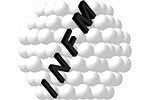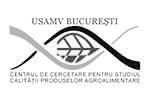Fusion:AIR | 2024
Biophilia | Technophilia
Even after more than a decade since the release of the famous manifesto “Living in the Anthropocene” (Crutzen & Schwägerl, 2011), which marked the death of Nature and the triumph of the artificial, a solution to overcome the ecological crisis has yet to be found. However, it’s certain that neither the romantic approach advocating a return to an untouched natural paradise nor the post-natural reduction of the world to a constructed space, an enclave of the artificial, represent real solutions. Eco Art, on the other hand, proposes the delineation of a territory of hybridization, of intersections between the human and non-human, between the “flesh” of the world and that of humans, between matter and idea. Following the lines of thought drawn by post-humanist theorists in the footsteps of Deleuze, as well as luminous eco-phenomenological concepts - chiasm, flesh, reversibility, dwelling, earth - eco-artists suggest a solution to surpass anthropocentrism through a dual becoming of man: becoming-nature and becoming-machine. Where becoming-animal does not imply a trivial return to animality and becoming-plant does not mean relinquishing action and movement, but rather both refer to the return of man to the root of life and the enrichment with the biological valences and the lofty spirit of animality. Similarly, becoming-machine does not entail a mere robotization but an initiatic immersion into the realm of bits and electrical circuits, where any differentiation between genders, sexual orientations, or skin colors loses its meaning. In conclusion, the two directions, seemingly contradictory, lead together to the dissolution of anthropocentrism, to overcoming the dualism between man and things, to a new relationship between nature and culture, between the born and the constructed.
Fusion:AIR thus positions itself at the intersection of bio-philia and techno-philia, in a space of balance and interference marked by the ancient téchne, interpreted by the Greeks as a species of everyday knowledge necessary for an individual “facing nature”, a space that today encompasses biomimetic practices recognizing and emulating the intrinsic intelligence of non-human species (animals, mushrooms, bacteria, fungi), the development of living buildings, and self-organizing robots. Here, technology renounces its function as an agent of separation, paradoxically bringing humans closer to the perimeter of the living, responding to our intrinsic need to be connected with nature and to protect the Earth’s fragile ecosystems.
The artists selected by Fusion:AIR, accustomed to collaborative work in interdisciplinary teams, with laboratories and experimental spaces, will continue the enthusiastic manner in which Nam June Paik “tamed” technology by combining TVs with plants and fish, and will recontextualize Fluxus’s concern for the inexhaustible elements of nature - water, air, fire, or earth. The team of researchers and artists will redefine beauty and other aesthetic categories in turn, marking a happy proximity to truth (aletheia), facilitating a discourse that encourages both the beauty of a law or scientific formula and the illuminating capacity of artistic truth. (curator - Raluca Oancea)
EXPO
WITH THE SUPPORT OF:






























